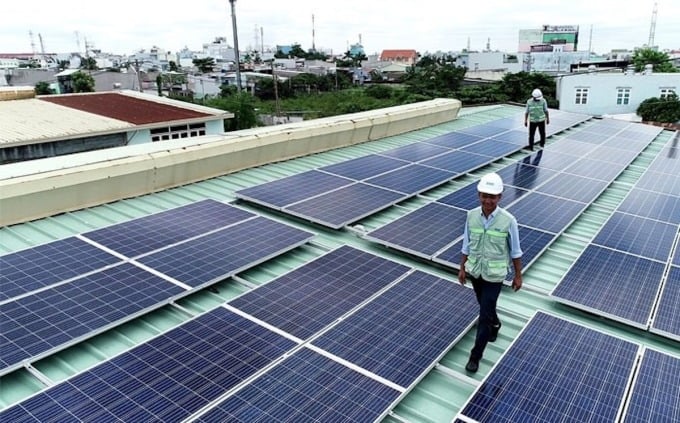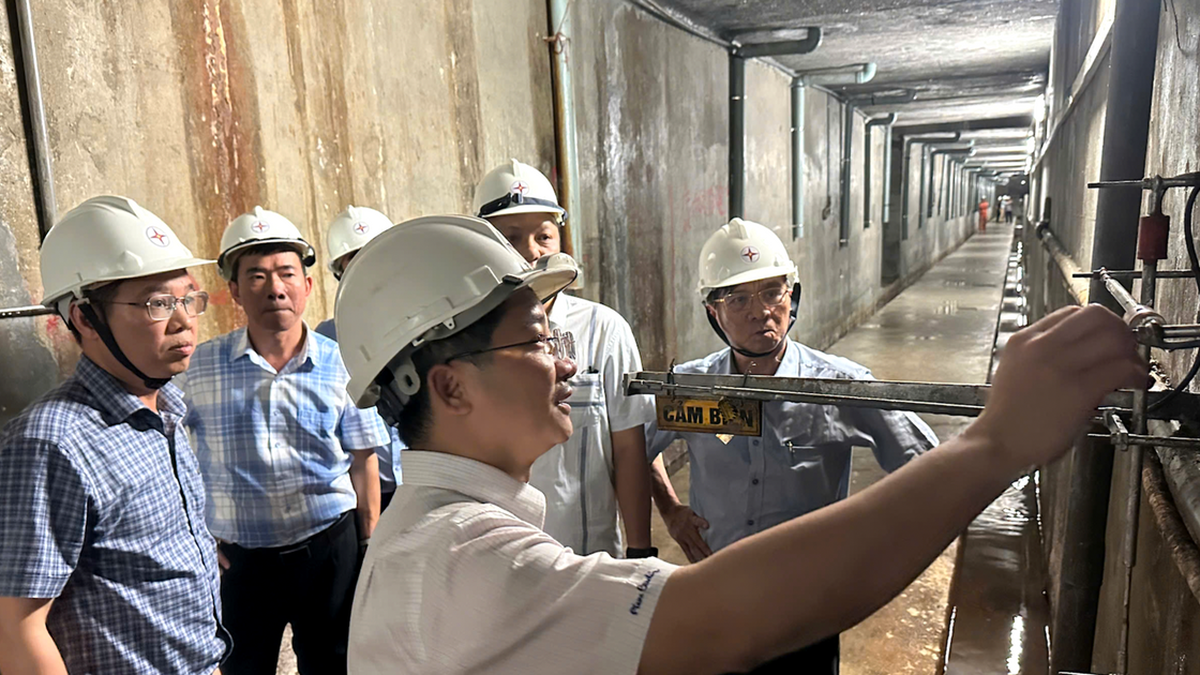Households and offices that install rooftop solar power for on-site use will enjoy a number of incentive mechanisms including tax and fee exemptions and reductions, and preferential interest rate loans.
The Ministry of Industry and Trade has just reported to Prime Minister Pham Minh Chinh on the draft mechanism to encourage the development of rooftop solar power installed in homes, offices, and business headquarters for self-use, without selling electricity to other organizations or individuals.
The incentive mechanisms proposed by this Ministry aim to gradually implement the VIII Power Plan, by 2030, 50% of office buildings and 50% of houses will use self-produced and self-consumed rooftop solar power (consumed on-site, not sold to the national power system).
Accordingly, people and businesses installing rooftop solar power at their homes and offices will be exempted from electricity business licenses and electricity business registration certificates; exempted or reduced from taxes and fees; and eligible for preferential loans. Offices under administrative agencies, ministries and branches will receive priority funding from the budget when installing this type of energy for on-site self-use.
Organizations and individuals investing, installing and using rooftop solar power systems must ensure requirements on electrical safety, construction works, environment and fire prevention and fighting.

A rooftop solar power system is installed on the roof of a business headquarters in Ho Chi Minh City. Photo: EVNHCM
The mechanism for installing solar power for self-use in factories and production workshops has not been issued by the Ministry of Industry and Trade.
Mr. Tran Hoat, Director of a garment manufacturing enterprise in Phu Thi Industrial Park ( Hanoi ), said that this unit is planning to install rooftop solar power systems on the roofs of factories to gradually meet the green certification requirements in garment manufacturing according to the requirements of export partners. However, after the previous mechanism expired at the end of 2020, it is not clear how the installation will sign a power purchase contract or grid connection agreement with the electricity industry.
According to him, this incentive policy proposal only stops at households and offices, not factories or industries, making it difficult for manufacturing enterprises to achieve green certification in their products, which means they are required to invest in using renewable energy.
As a developer and installer of rooftop solar power systems, Mr. Le Vinh Son, Chairman of Son Ha, also believes that the authorities need to soon issue specific guidelines and incentive policies for the development of this type of system in factories and industrial parks. This will help reduce pressure on the national power system and soon achieve the goal of reducing net emissions to zero as committed by Vietnam at the COP 26 Conference.
Regarding this, the Ministry of Industry and Trade said that in the immediate future, this agency will choose to encourage the development of power sources for households, offices, and businesses in the form of self-use with appropriate capacity, without much impact on the operation of the power system.
The mechanism for developing rooftop solar power in factories and large-scale manufacturing enterprises requires time to research and evaluate. This is to control the appropriate capacity of the system, avoid putting pressure on the grid, and avoid massive development.
In recent proposals sent to the Ministry of Industry and Trade, EVN has requested that this agency soon issue a mechanism and guidelines for developing rooftop solar power that is not connected to the grid, meaning it is self-consumed for the on-site electricity needs of households. This is also one of the solutions to overcome difficulties in electricity supply in 2023 and the following years.
The characteristic of solar power is that it only mobilizes maximum capacity when there is enough radiation, so in the North, the amount of electricity mobilized from this source is at most about 1,000 hours a year and is only highly available during the dry season. "The mechanism for this type needs to be clear to avoid massive development and ensure incentives for households using electricity to invest," expert Dao Nhat Dinh noted.
According to Power Plan VIII, by 2030, 50% of office buildings and 50% of houses will use self-produced and self-consumed rooftop solar power.
The Government also sets priority goals and has breakthrough policies to develop solar power on people's rooftops and construction roofs, especially in areas at risk of power shortages such as the North, and self-produced and self-consumed solar power.
From now until 2030, the capacity of these types of power sources is estimated to increase by 2,600 MW, with priority given to unlimited capacity development under reasonable price conditions and taking advantage of the existing power grid, without having to upgrade.
Source link

























![[Photo] National Assembly Chairman Tran Thanh Man visits Vietnamese Heroic Mother Ta Thi Tran](https://vphoto.vietnam.vn/thumb/1200x675/vietnam/resource/IMAGE/2025/7/20/765c0bd057dd44ad83ab89fe0255b783)










































































Comment (0)